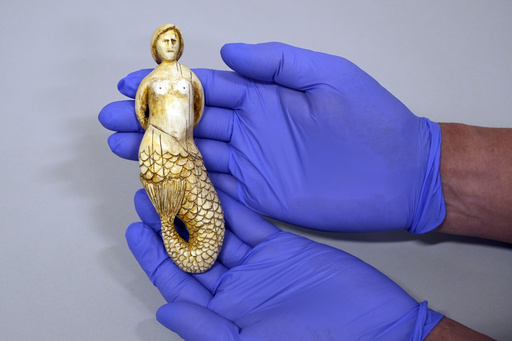
Quentin Tarantino left attendees of the Academy Museum’s fundraising gala in Los Angeles curious when he appeared on stage with an unassuming duffle bag. As he took the podium, the bag drew attention for its peculiar presence among the night’s glitzy festivities. Upon opening it, Tarantino revealed the original handwritten script of “Pulp Fiction,” complete with typos and corrections, which he generously donated to the museum.
Matt Severson, the museum’s executive vice president for collection and preservation, expressed the surprise of the audience, stating that no one had anticipated such a gift. “This was not something pre-arranged with the museum; it was Quentin’s spontaneous idea to make a meaningful contribution,” he explained. The presentation of the script marks a significant addition to the Academy Museum’s extensive collection of cinematic memorabilia, which was further expanded this week.
Among other recent acquisitions announced are original animation pieces from Hayao Miyazaki’s “Ponyo,” as well as costumes including Kurt Russell’s attire as Snake Plissken from “Escape from L.A.” and accessories worn by Mink Stole in “Pink Flamingos.” The museum has also made strides in obtaining personal collections from notable filmmakers like Paul Verhoeven and Oliver Stone, in addition to classic 70mm films such as Nolan’s “Oppenheimer” and David Lean’s “Lawrence of Arabia.”
Severson emphasized the museum’s mission to obtain artifacts that resonate with audiences of all ages and interests. Since its establishment in 1927, the Academy has been committed to preserving the rich tapestry of global cinematic history. Notably, several stars have made direct donations, including Jamie Lee Curtis, who donated her dress from “True Lies,” and Lou Diamond Phillips, who contributed the guitar he played in “La Bamba.” Just last year, Steven Spielberg added to the collection with hand-drawn animation cells from Disney’s “Snow White and the Seven Dwarfs.”
Studio Ghibli, which maintains exclusive partnerships with no other American museums, also made its mark by donating over 80 original animation artworks created by Miyazaki and Noboru Yoshida, alongside Japanese posters from the studio and an animator’s desk used in-house. “Having original Miyazaki artworks is simply breathtaking,” remarked Severson.
With its impressive repository of over 52 million items, the Academy Museum boasts the largest film memorabilia collection in the world. While not every piece is available for public viewing, visitors can access elements of the collection through various platforms, including the museum itself and the Academy Film Archive.
During the gala, Severson was inspired by renowned figures like Nicole Kidman and Jeff Goldblum, who shared their appreciation for the museum’s efforts. He highlighted the dedication of the staff in preserving and displaying the collection. This includes the film preservation and paper conservation teams who meticulously restore damaged photographs and props, such as the belt from the 1982 film “Tron,” which required extensive refurbishment.
Severson noted the importance of recognizing the meticulous work that goes into preserving the collection, stressing that this knowledge should be passed on to future generations of creators and filmmakers. “This museum serves as a vital platform, not only showcasing Hollywood’s rich history but also illuminating the broader narrative of the global film industry,” he asserted.
